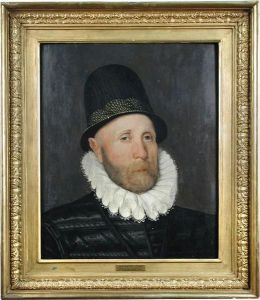Arnold Bronckhorst Paintings
Arnold Bronckhorst, or Bronkhorst, is a somewhat enigmatic figure in the history of art, primarily because details about his life are scarce. There is no record of his birth date, and historians believe he was of Dutch origin. He is known primarily for his work in Scotland, and he is often recognized as the first documented court painter in Scotland.
Bronckhorst's exact date of birth is not known, but by the late 16th century, he was active in Scotland. He appears in the historical record as a painter in 1565 in Edinburgh, but it is not clear when he arrived in Scotland. It is presumed that he was trained as an artist in the Netherlands, which was renowned for its high quality of art education and production during that era.
Arnold Bronckhorst is most noted for his association with the court of James VI of Scotland (who later became James I of England). In 1581, Bronckhorst was appointed as the King's Painter, a position that signified a notable recognition of his skills and his establishment within the Scottish court.
His surviving works include portraits of significant figures from the Scottish court. Unfortunately, many of his paintings have not survived or have been attributed to other artists due to the lack of a clear painterly signature or identifiable style. His most famous painting is likely the portrait of James Douglas, 4th Earl of Morton, which is held in the collection of the Scottish National Portrait Gallery. This work is particularly valuable as it provides a rare and early example of Scottish portraiture.
Arnold Bronckhorst's death is recorded in 1583, and like his life, the circumstances of his death are not well documented. Despite the scarcity of biographical details, Bronckhorst's role as a court painter in Scotland marks him as a significant figure in the development of Scottish portraiture in the late Renaissance period.
